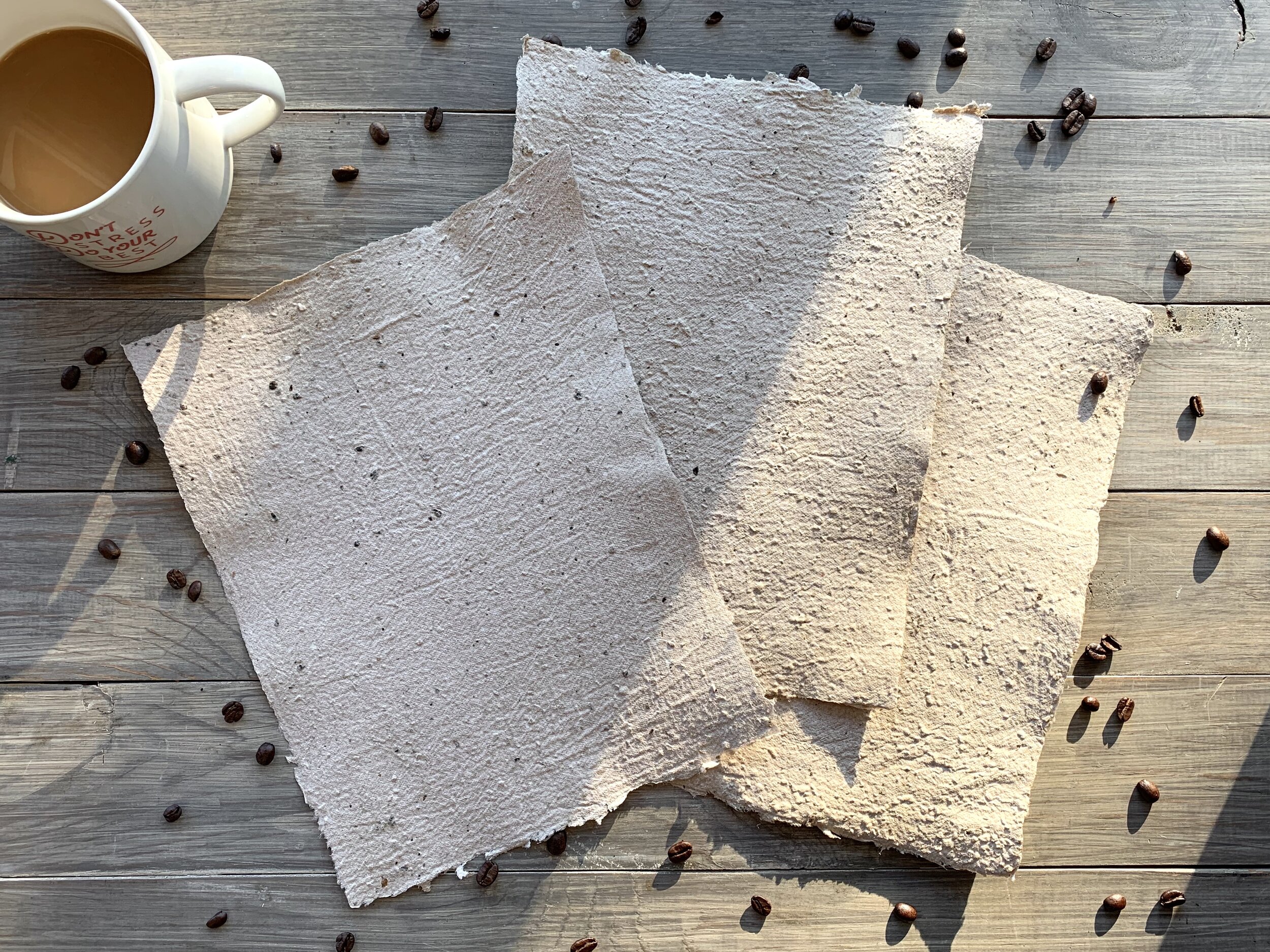Making Handmade Coffee Paper
It’s been a cold week here in Minnesota. And I mean cold. We’re talking in the negatives multiple days in a row, with an end in sight only over the last few days.
Because of that, I’ve been hibernating inside, reading a lot, thinking of the next papermaking project, and enjoying the fireplace. I’ve also been reminiscing about past papermaking experiments. Coffee paper, actually. It’s apt being coffee always gives me such an oh-so-warm feeling inside, very much needed on a week like one.
I made coffee paper when I was still in my very early days of learning how to make paper. Making handmade coffee paper was something I had wanted to try from the get-go, since I have such a strong love (and need, really) for coffee. It seemed only natural that I try using it in my handmade paper. By this point, I felt confident enough in my abilities to give it a go at the very least, and if I failed, so be it! Every budding artist has their failures.
But thankfully, making coffee paper was a success. After a long day of papermaking outside in the 90-degree Minnesota summer heat (yes, we really do operate on temperature extremes throughout the year!), I had made a decent number of sheets that all seemed like they’d hold up and turn out.
The process went like this:
Drive to the nearest gas station. Purchase two large cups of black coffee.
At home, grind up fresh coffee beans with my Java Presse Manual Burr Grinder.
Prepare the pulp. In this case, I used recycled white paper pulp mixed with kraft paper pulp. The kraft paper is a thin paper to begin with and I had my doubts it would make a strong sheet. So the kraft paper, mostly, was so that the final paper would have a brown, coffee-ish color to it.
Add the freshly ground coffee beans.
Add the two large cups of black coffee.
Mix to distribute the additives.
Start pulling sheets!
The whole process was a lot easier than I thought it would be. However, with anything, there are always improvements to be made, but by and large I was happy with the final outcome. These sheets, while definitely very textured, could be used in my projects at least. With a little more fine-tuning, they would maybe even be good enough to sell.
The one question I’ve received over and over again in regards to my coffee paper is if the paper smells like coffee. And I always feel bad when I have to say that no, the paper doesn’t smell like coffee. Don’t get me wrong. The paper definitely smelled like coffee when I was pulling sheets and as they dried. However after the sheets were dried, the smell went away. I’m not sure if there’s anything I could have done to get the paper to smell like coffee. Perhaps I needed to use a whole vat of coffee instead of dumping two large cups into a vat of water. Perhaps those cups of coffee became too diluted, thus resulting in a coffee paper that didn’t smell like coffee.
As I started using the paper in my projects, I also started to notice that some of the ground coffee beans popped out of the paper, particularly if I ran my hand over the paper. It seems as though my sheets were either too thin, and so the larger bean chunks weren’t able to fully embed in the paper. Or, more likely, I should have adjusted the burr grinder to grind at a finer setting. All in all, this wasn’t a huge deal—the papers still contained bits of bean and that texture still showed through. But the perfectionist in me definitely found this an inconvenience; it’s something to improve on for next time.
What do think? Is coffee paper an interesting avenue to keep exploring? What ideas do you have for fun paper experiments? Drop a comment below!



